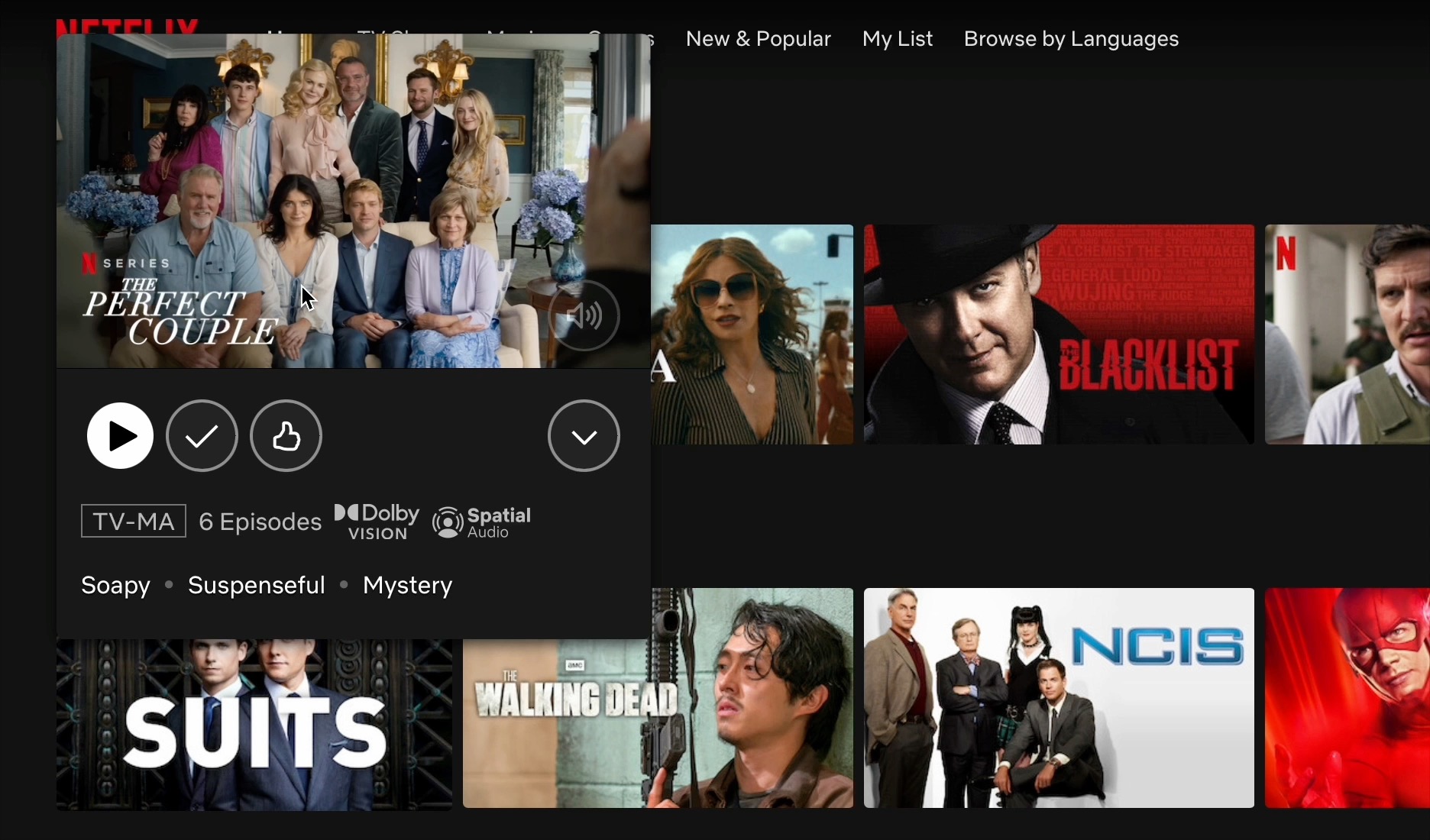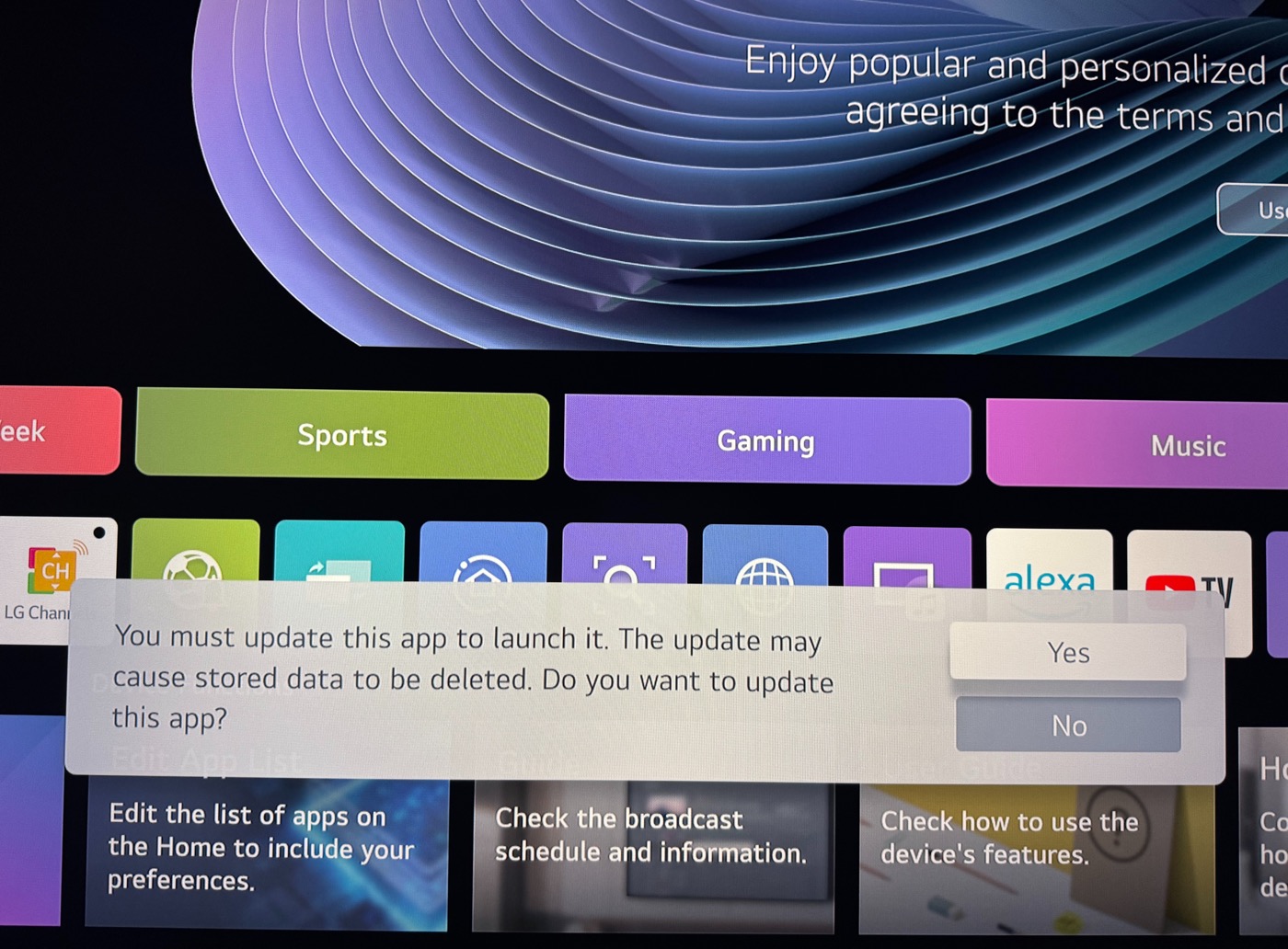Summary:
Frustrating streaming apps and smart TV design pushed at least one user (me) back to physical discs for reliability, ownership, and simpler choices.
I remember when the first digital-streaming service (Netflix’s) became available. It was such a massive improvement on the user experience of watching a movie — no need to go to a theater or a movie-rental store like Blockbuster. Selections were limited and streaming speeds were slow, but it still felt like a revolution in the media-consumption experience.
Roughly 20 years later, the experience should be even better. My download speeds have increased by a factor of 100, and I have literally hundreds of thousands of episodes and movies at my fingertips. And yet, the streaming experience has become so atrocious that I — a person who grew up in the 90s — am back to collecting DVDs and Blu-rays.
Compared to the concept of streaming, physical media is a pain.
- Delayed gratification: After I purchase a DVD or Blu-ray, I have to wait days — or even weeks! — before it’s delivered and I can watch it.
- Storage and organization: A physical-media collection must be stored and (ideally) organized somewhere, to have any hope of finding a movie in my collection.
- Equipment required: I need a device capable of playing a physical disc (in my case, an Xbox).
- No cross-device streaming: I don’t have that movie in my pocket — I can’t pause in the middle and switch to streaming it on my phone.
- Awkward UIs: I’m sure some young readers have never seen a DVD menu before. Let me tell you, they represent some of the clunkiest, most self-indulgent software designs of all time.
So how can I explain the fact that I’ve been actively collecting DVD and Blu-ray discs for the past few years?
Partially, because of my husband, John. He has strong nostalgia for the classic 1990s American-childhood pastime of perusing the shelves of a Blockbuster Video. He’s also an avid fan of 1970s slasher films, 1980s action, and 1990s yuppie nightmares. (As John says, this was “back when they made movies,” before cheap CGI and lazy superhero IP became the standard.) He especially wants to help preserve niche, indie movies that aren’t being digitized by studios because they aren’t popular enough.
But we also collect DVDs because the digital-streaming experience has become so bad, physical media is pleasant by comparison.
What used to make analog media inconvenient now feels charming. Choosing from among a limited set of curated, favorite movies feels like a relief compared to endlessly browsing through tens of thousands of options.
There’s a real joy in slowly building up our collection over time. We actively keep an eye out for movies in estate sales and charity shops. We dig through bargain crates in local vinyl shops to find hidden treasures. The effort and time we put into this activity probably contribute to our overall enjoyment. (This is also why collectors of luxury goods value most those items that are hardest to obtain — though vintage DVDs are substantially cheaper than a vintage Chanel bag.)
There’s an element of serendipity too — a bit like wandering the aisles of a bookstore, not knowing exactly what you’ll find. The browsing flows of most streaming apps try but fail to replicate that experience (though Netflix makes clever design choices that come close).

With physical media, I also feel a sense of security knowing that most of my favorites are available to watch at any time. I don’t have to go hunting through multiple streaming apps to figure out which one happens to have the rights to that film this month. When I pop in a Blu-ray, I don’t have to:
- Discover I’ve been automatically logged out of a streaming service.
- Manually type in an email address or password with a remote control. (The fact that some streaming services still don’t support QR-code off-device sign-in is insane.)
- Realize that this streaming service has suddenly decided my payment tier isn’t expensive enough and will now require me to watch ads.
- Download and wait for app updates that don’t improve the experience at all. (Or worse, download yet another new app from HBO with a new name for no reason at all.)
- Pay a monthly fee to watch that movie — I buy it once, and then it’s mine forever.
In the end, the inconveniences of discs start to feel charming, especially next to the constant password resets and subscription confusion that have become standard in streaming.
My Smart TV Isn’t Very Smart
But the blame for subpar streaming experiences doesn’t lie solely with streaming apps. We have to talk about “smart” TVs.
I have an inexpensive LG TV I bought from Costco. (In hindsight, it’s likely cheap because they cut so many costs on the hardware and software.) The picture quality is great (probably because that’s what a lot of people base their purchase decisions on), but the TV loads content and apps extremely slowly.
Somehow, this TV needs constant updates and refuses to update itself automatically when we aren’t watching it. As a result, we constantly have to wait for it to slowly download these updates and then install them.

Additionally, LG seems to frequently alter its terms and conditions, and requires me to accept them before I can update some of the apps, and it won’t allow me to use those apps without updating. The new conditions include pre-accepted options allowing LG to collect my data and sell it to third-party companies for advertisement purposes.
Users can select those pre-checked agreements to opt-out, but that was not clear to me at first. By having them pre-checked, while I had to manually opt-in to all others (or choose the Select All option at the bottom of the screen), I interpreted this to mean that I had to allow the TV to collect that data in order to use it as a display. Based on how little attention the average user pays to privacy agreements, I’m willing to bet most other people assume this as well (if they even take the time to read the policies, which most don’t).
This is an example of a deceptive pattern: I purchased a display, but the manufacturer treats it as a data-collection platform without reliably delivering on its basic functionality. It’s one thing to trade my privacy for a good experience. But I should be in charge of that decision. LG has not earned its privacy invasion in this case.
So now, I have a Roku attached to my smart TV. The TV has become a dumb display like in the old days, except worse.
Am I the Only One?
I don’t think I’m a typical user, and I don’t think streaming services are in any danger of mass rebellion and cancellations in favor of physical media. Some major retailers (like Best Buy) have stopped selling discs altogether, so the switch to analog isn’t a dominant consumer trend.
But as I find myself yearning for the stupid, chunky TVs and inconvenient discs of yesterday. I don’t think I’m alone in my frustrations with modern video streaming.
Design Implications
The negative experiences that are pushing me back to physical media are cautionary tales for any digital product, not just streaming services.
- Convenience that isn’t reliable isn’t convenient. Physical media works every time I insert a disc. No authentication, no updates, no new ad tier.
- Having limitless choices isn’t always a positive. For me, a manually curated collection of 200 movies provides more satisfaction than algorithmically generated suggestions from 100,000 options. When people are overloaded with information and options, the careful design of browsing and searching mechanisms matters immensely.
- Cross-device complexity has costs. Apps often fail to achieve seamless experiences across multiple channels, and that friction adds up. The cross-device authentication problem for streaming services is a clear example of this problem.
- A lack of care (or research) quickly becomes apparent. When companies fail to understand what their customers care most about, they fail to deliver on those needs. When they don’t look at how their products are used in messy real-life scenarios, they will fail in the real world.